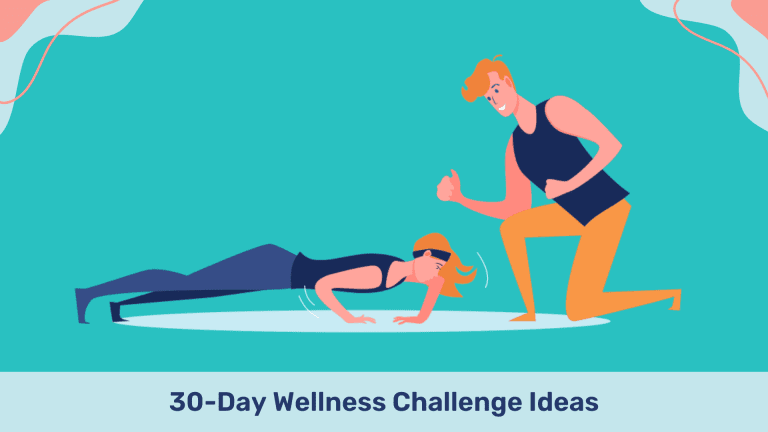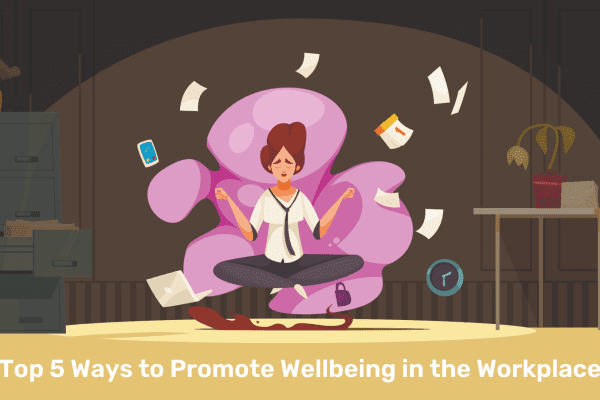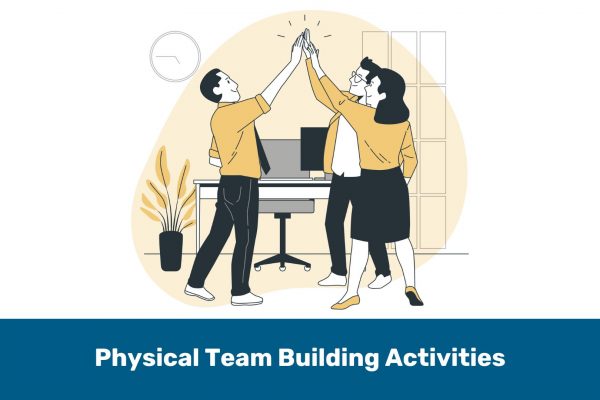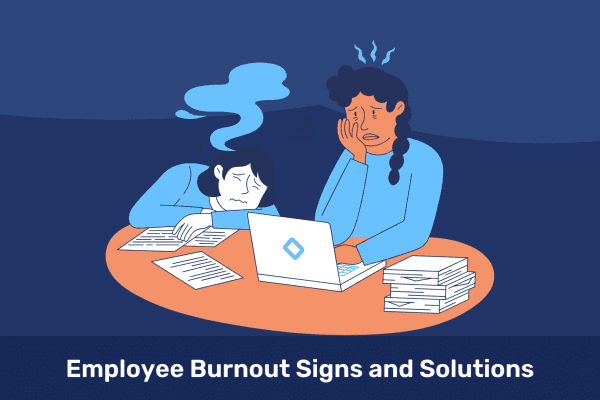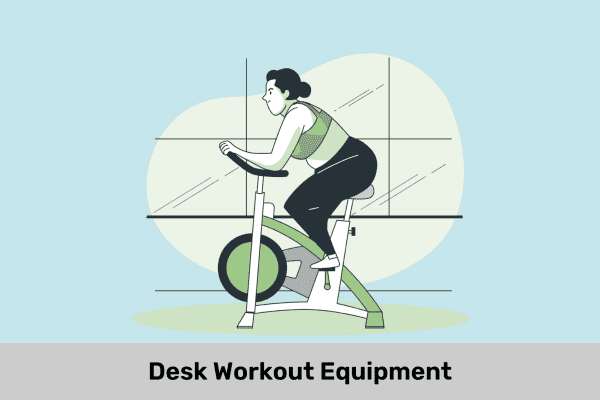Introduction
Incorporating wellness challenges into your workplace or personal life can be a fun and effective way to improve your health and well-being. By setting specific goals and engaging in healthy activities, you can increase your motivation, build healthy habits, and improve your overall quality of life. There are many different types of wellness challenge ideas to choose from, depending on your personal interests and goals.
According to the US Chamber of Commerce, a sizable majority of companies report that workplace wellness programs reduced their organization’s overall healthcare costs, with well-designed wellness programs like Woliba leading to a return on investment (ROI) of $1.50 to $3.00 per dollar spent over a timeframe of two to nine years.
Here’s the catch, though: Wellness programs only work when they keep employees engaged. For some, that can mean a wellness journey tailored to their particular goal, such as weight loss, smoking cessation, or training for a 5K.
But one of the most popular engagement features is gamification, the process of using game mechanics like competition, incentives, and achievement to make a program more engaging. By injecting play into wellness programs, you can facilitate friendly competition between coworkers by encouraging healthy behaviors and reward programs.
Game-like structures offer a sense of personal responsibility by making wellness social. In other words, people are more likely to exercise and eat healthy if their friends and coworkers are. Numerous studies have shown, for example, that an individual is more than 70 percent more likely to be obese if their closest friends are obese.
Without further ado, here are five 30-day wellness challenge ideas that will help your employees become happier, healthier, and more productive.
What is the 30 day Wellness Challenge?
The 30-day wellness challenge is a structured program designed to encourage individuals to prioritize their well-being for an entire month. It typically includes a variety of activities, exercises, and healthy habits aimed at improving physical, mental, and emotional health.
Participants engage in daily challenges that focus on different aspects of wellness, such as exercise, nutrition, mindfulness, self-care, and stress management. The challenges can range from simple tasks like drinking more water or taking a walk to more complex activities like trying a new workout routine or practicing meditation.
The purpose of the 30-day wellness challenge is to promote healthy habits, increase awareness of personal well-being, and create a positive shift in overall lifestyle. It serves as a catalyst for individuals to take small, consistent steps towards improving their physical and mental health, leading to long-term positive changes.
By participating in a 30-day wellness challenge, individuals can experience increased energy levels, improved mood, enhanced fitness, reduced stress, and a greater sense of well-being. It provides an opportunity to prioritize self-care and make wellness a priority in daily life.
Whether organized within an organization, community, or done individually, the 30-day wellness challenge offers a structured and motivational approach to cultivate healthier habits and foster a positive mindset.
Also Read:
How do you set up a 30 day Wellness Challenge?
Setting up a 30-day wellness challenge involves careful planning and organization to ensure its success. Here are some steps to guide you in setting up a 30-day challenge:
1. Define the purpose
Determine the specific objectives and goals of the challenge. Is it focused on fitness, nutrition, mindfulness, or a combination of wellness aspects? Clarify the intended outcomes and what participants can expect to achieve.
2. Choose a theme
Select a theme that aligns with the goals of the challenge. It could be centered around weight loss, stress reduction, improving flexibility, or any other wellness aspect you want to address.
3. Develop a timeline
Set the duration of the challenge. A 30-day timeframe provides enough time for participants to experience positive changes while still being manageable and motivating.
4. Create daily challenges
Plan a series of daily challenges for participants to complete throughout the 30 days. Each challenge should be specific, measurable, attainable, relevant, and time-bound (SMART). Consider incorporating a variety of activities that target different aspects of well-being.
4. Provide resources and support
Offer participants resources and materials to support their journey. This can include workout routines, meal plans, meditation guides, or informational handouts related to the challenge theme. Provide guidance and answer any questions participants may have.
5. Track progress
Encourage participants to track their progress throughout the challenge. This can be done through an online platform, mobile app, or a physical tracking sheet. Tracking progress helps individuals stay accountable and provides a sense of accomplishment.
6. Foster a community
Create a supportive community for participants to connect, share experiences, and provide encouragement. This can be done through online forums, social media groups, or regular check-ins.
7. Celebrate milestones
Recognize and celebrate participants’ achievements as they progress through the challenge. Acknowledge milestones reached and provide incentives or rewards to keep motivation high.
8. Evaluate and reflect
At the end of the challenge, gather feedback from participants to assess its effectiveness. Use this feedback to improve future challenges and make adjustments as needed.
Remember, clear communication, participant engagement, and a well-structured plan are key to setting up a successful 30-day challenge. By providing the necessary resources, support, and motivation, participants are more likely to stay committed and experience positive results.
Top Five 30 Day Wellness Challenge Ideas
1. Five Minute Workouts
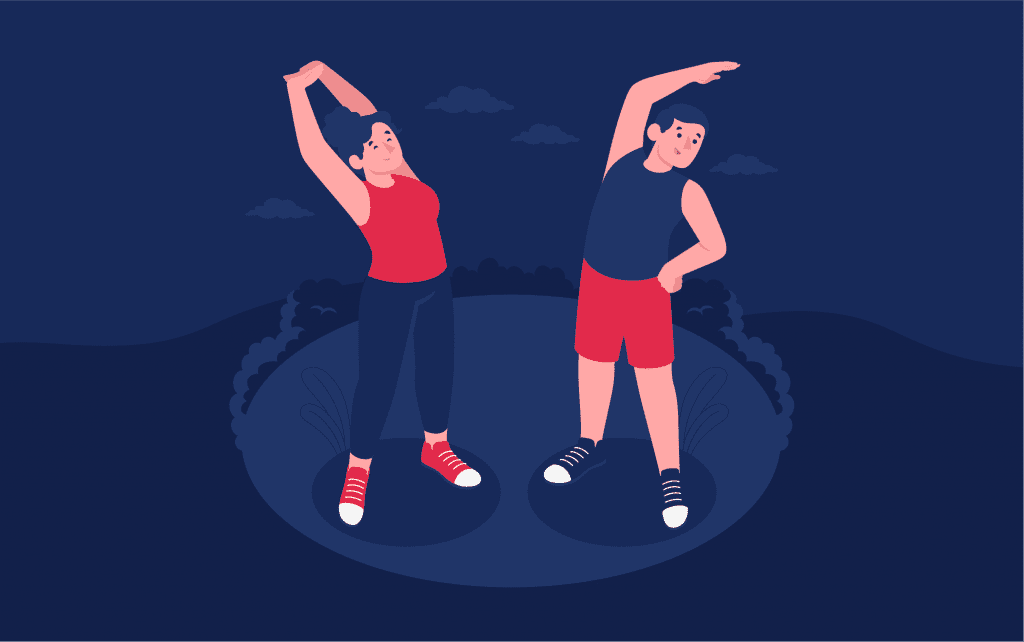
How many workouts can you squeeze into your day?
We tend to associate working out with hour-plus gym sessions or equally long runs. You can’t see benefits from very short bursts of activity, right?
Wrong. The effect of exercise on the body is cumulative, meaning splitting up your sessions into small chunks is just as effective as one long block.
In one study, for example, men and women who incorporated short bursts of high-intensity activities into everyday life saw a noticeable decrease in their body mass index (BMI) compared to a control group that did not exercise in short bursts.
This kind of short, high-intensity workout is a hallmark of Tabata training, which is a four-minute, high-intensity interval training workout consisting of 20 seconds of hard effort and 10 seconds of rest, repeated eight times.
Short, intense workouts work, so why not try a 30-day workout challenge by squeezing in as many five-minute sessions into your day as possible?
In a time when millions of Americans are still working from home, five-minute workout challenges are the perfect way to promote personal wellness. For ideas on workouts you can try right on your carpet, check out the Woliba wellness libraries.
Also Read:
Top 6 Workplace Fitness Challenge Ideas for Remote Teams
2. Five Minute Meditation

At the office, it was hard enough unplugging from your day, and it can be even harder when working from home, especially for those with children. You have to be “on” from the moment you wake up until you fall asleep. And the endless slack notifications and calendar invites certainly aren’t helping.
Studies routinely show that deep-breathing exercises have a positive effect on our mental health, even for as little as five minutes per day. To help reduce stress levels, why not challenge your team to meditate for five minutes each day.
According to the Mayo Clinic, box breathing can calm and regulate your autonomic nervous system, which regulates body functions like temperature and blood pressure.
Researchers at the Wellness Institute at Cleveland Clinic found that mindfulness-based techniques, including meditation, can lower stress levels in a demanding work environment and lead to happier, more engaged employees.
After researchers instituted a stress-reduction program based on meditation practices, participants saw a 31 percent decrease in stress levels and a 28 percent increase in vitality, meaning how energized they feel throughout the workday.
For more articles and videos on how your employees can meditate right at their workstation, check out the Woliba wellness library.
Also Read: Gratitude Meditation
3. Sleep Challenge

This one might seem a little strange at first. A challenge to see how much you can sleep? Except that sleep is perhaps the most neglected component of our health.
As a study by Harvard University explains, “A lack of adequate sleep can affect judgment, mood, ability to learn and retain information, and may increase the risk of serious accidents and injury.”
Simply put, employees who aren’t getting the recommended seven hours of sleep per night are putting themselves at risk of obesity, reduced concentration, mood swings, weakened immunity, high blood pressure, type 2 diabetes, and many other chronic ailments.
Admis can easily organize and manage a sleep challenge using the Woliba software. For participants who need help falling and staying asleep, we even offer an extensive sleep journey on this incredibly important component of wellness.
4. No-Sugar Challenge

Ask 20 different nutritionists and you’ll get 20 different answers on what the best diet is, from veganism to paleo to the Mediterranean diet. But one thing everyone can agree on is that too much sugar is bad. After all, there isn’t a Krispy Kreme diet.
Just take it from the Harvard T.H. Chan School of Public Health, which conducted a 15-year study exploring the link between added sugars and heart disease. The results? People who obtained 17 to 21 percent of their calories from added sugar had a 38 percent higher risk of dying from cardiovascular disease compared with those who consumed 8 percent of their calories as added sugar.
Added sugars are everywhere, from morning coffees to pastries to bread (yes, bread). Considering that sugar is one of the major contributors to heart disease, why not challenge your employees to cut it out for a month?
Also Read: No Sugar Challenge
5. Stay-Hydrated Challenge

Believe it or not, but the odds are that as you read this, you are dehydrated. Three-quarters of adults are chronically dehydrated, resulting in everything from headaches to fatigue to dizziness and difficulty concentrating.
Most people don’t drink until they’re thirsty, but the problem is that we begin to experience the effects of dehydration long before that point. One of the first symptoms is decreased productivity. For example, one study found that being just 3 to 4 percent dehydrated can lower your work performance by as much as 50 percent.
According to the U.S. National Academies of Sciences, Engineering, and Medicine, the typical adult male needs to drink about a gallon of water per day, which comes out to a little over 15 cups. Women need about 11.5 cups per day. Why not challenge your teams to meet the daily recommended amount for 30 days straight?
Read Further: 30-Day Water Challenge
These are just five 30-day wellness challenge ideas, but don’t stop there. What are some more creative ways to help your employees cultivate new habits? Remember that 30 day challenges don’t have to end after 30 days—why not make them last a lifetime?
Conclusion
These are few 30 day wellness challenge ideas. These can be a powerful tool for promoting healthy behaviors and improving overall well-being. Whether you are looking to improve your fitness, nutrition, mental health, or overall lifestyle habits, there are a wide range of wellness challenges that can help you achieve your goals.
By setting specific targets, engaging in healthy activities, and tracking your progress, you can build healthy habits and maintain a positive, balanced lifestyle.
To get the most out of a wellness challenge, it’s important to choose a challenge that aligns with your personal goals and interests, and to seek support from friends, family, or colleagues to help you stay motivated and on track.
With the right mindset and support, wellness challenges can be a fun and effective way to improve your health and well-being over the long term.
Woliba stands as an exemplary platform for providing wellness challenges. Its diverse range of challenges, community support, gamified approach, and holistic focus make it an ideal tool for individuals seeking to improve their overall well-being. Through Woliba, users can embark on a transformative journey, unlock their full potential, and experience a profound positive impact on their lives.

